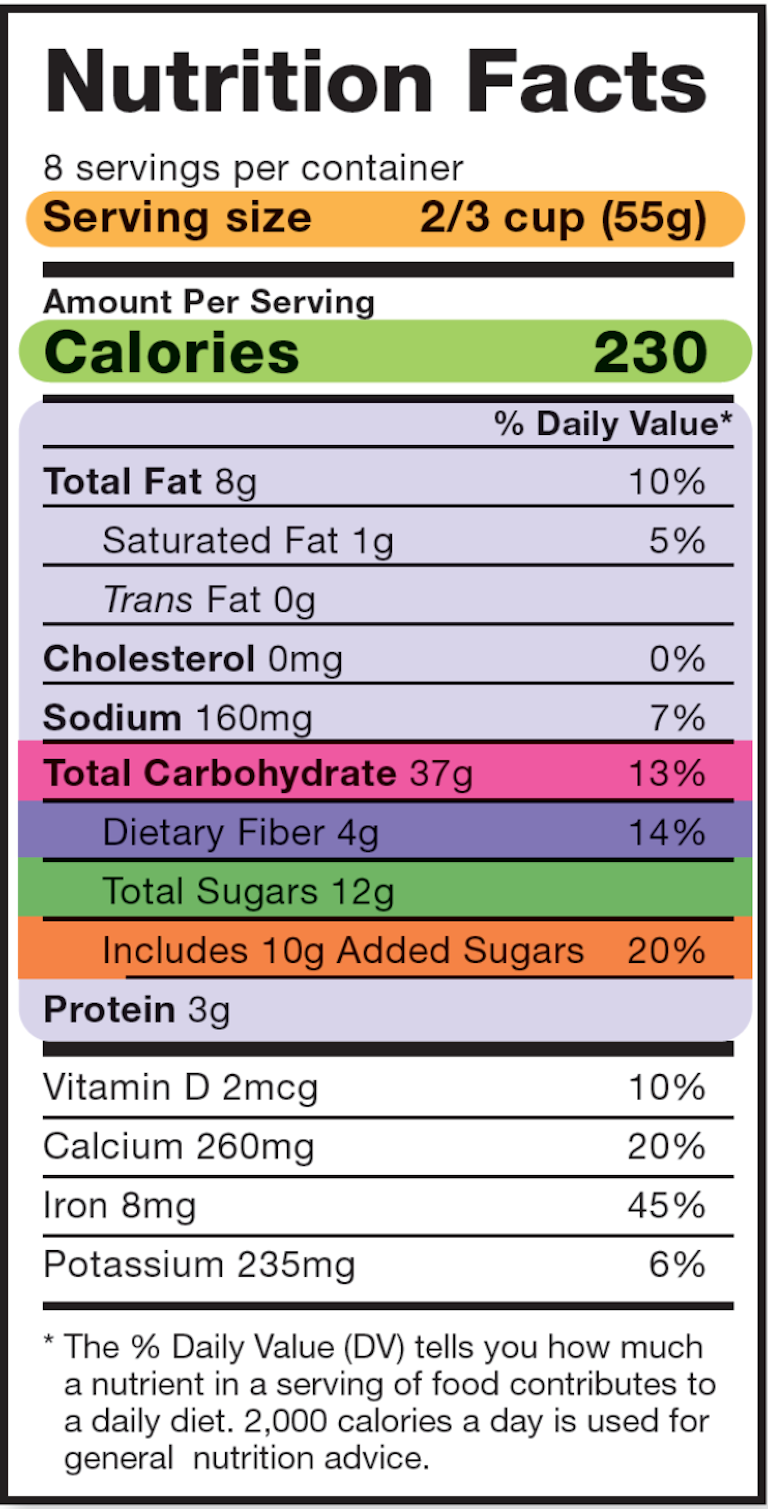Contact Us
If you are an Elderplan Member and have questions or concerns, please contact Elderplan Member Services at 1-800-353-3765 [TTY: 711], 8 a.m. to 8 p.m., 7 days a week or email us at [email protected]

Reading nutrition or food labels can be confusing. It is important to understand food labels to maintain a healthy diet.
Serving size tells you the portion size you should be eating.
Please remember that if you double the portion, you will need to double all of the measures.
Total calories per serving: Calories are units of energy your body consumes. Talk to your healthcare provider to learn how many calories you need.
Total Carbohydrate includes sugar, starches, and fiber. Use total grams if counting carbs.
If you have other conditions like heart disease or kidney disease, you should follow your healthcare provider’s recommendations.

| If the label says: | One serving of the product has: |
|---|---|
| Sugar Free | Less than 0.5 gm of sugar |
| Reduced or less sugar | No sugar or sugar-containing ingredient is added to the product during processing. This is not a sugar-free product. |
| High fiber | 5 gm or more of fiber |
| Good source of fiber | 2.5 to 4.9 gm of fiber |
| Fat free, saturated fat free, or trans-fat free | Less than 0.5 gm of total far, saturated or trans fat |
| Low fat | 3 gm or less of total fat |
| Low saturated fat | 1 gm or less of saturated fat |
| Reduced or less fat | At least 25% less fat than the regular version |
| Sodium-free, salt-free, or no sodium | Less than 5 mg of sodium and no sodium chloride in the ingredients |
| Very low sodium | 35 mg or less of sodium |
| No added salt or unsalted | No salt added to the product during processing. This is not a sodium-free product. |
| Low sodium | 140 mg or less sodium |
| Reduced or less sodium | At least 25% less sodium than the regular version |
| Light in sodium | 50% less sodium than the regular version |
Many food labels state the number of nutrients included, such as sugar, fiber, fat, and sodium. Use the table below to understand what those statements mean as you look for foods to help you manage your diabetes and reduce diabetes-related complications.
At Elderplan, we value the health and wellness of our members. Knowing the basics about specific health conditions may help you be more aware of the risk factors to look for.
If you are an Elderplan Member and need help, contact Member Services. We can assist in scheduling your screening or recommend other care options through one of our programs.
If you are not a Member, please explore our health plan options to see if there is a plan that may suit your needs.
Lower your risk of diabetes and cardiovascular disease by learning about nutrition and the foods that keep you healthy!
All Resources